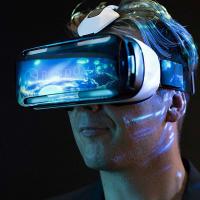Gearing Up to Test in the Augmented and Virtual Reality World

Augmented reality (AR) and virtual reality (VR) have gained traction in recent years. Device makers—including the big players Google, Microsoft, Facebook, and Sony—are heavily investing in making their hardware, including head gear, more user-friendly and affordable, while app makers are equally doing their part by building experiences and rich content to attract the masses. The numbers are noteworthy, with close to $9 billion being funneled into VR investments in the last five years, and the number of users buying these devices continues to rise. While the entire software development industry is paying attention to the skills required to develop applications for these sectors, it is especially an important area in which testers should focus.
For a long time, testers have been more focused on testing applications from the software angle. The introduction of mobile devices brought on some hardware involvement, but as more wearables enter the market, testers are having to focus on understanding software implementation and its acceptability in conjunction with the hardware in use—including functionality, UI, security, performance, user experience, and accessibility. Having the physical device is almost as mandatory for testers as it is for anyone else on the development team. One possible way to test is to run the application on a powerful non-wearable device (PC, laptop, mobile device), which will give you a view into the application and its workflow, but for the best experience physical, wearable gear is needed. In the case of VR, field testing is not as important, but in AR and mixed reality, there is a need for live field testing too.
Non-functional test attributes all of the sudden become so much more important in these sectors. A lag or a delay in rendering has so far led to performance issues that may impact user satisfaction. But now, a delay in gyroscope tracking and mapping to the application, may mean end user dizziness and other adverse user experience issues, which are far more negative than other issues in the past. User experience testing for user focus areas and learnability in using the device and the application are also important given the newness of the domain.
There may not be a clear-cut testing strategy yet for testing in the AR and VR world, but the core points to consider include a need for ongoing collaboration between hardware and software makers, an open development scenario, a strong focus on non-functional test areas, an increased reliance on user experience and expectations along with system requirements, and mapping the relevance of the application to the domain in which it is being used. Testers have to be extremely agile to learn and tweak on the go—it is after all an exciting period ahead, and agility will pave the way for superior quality.

